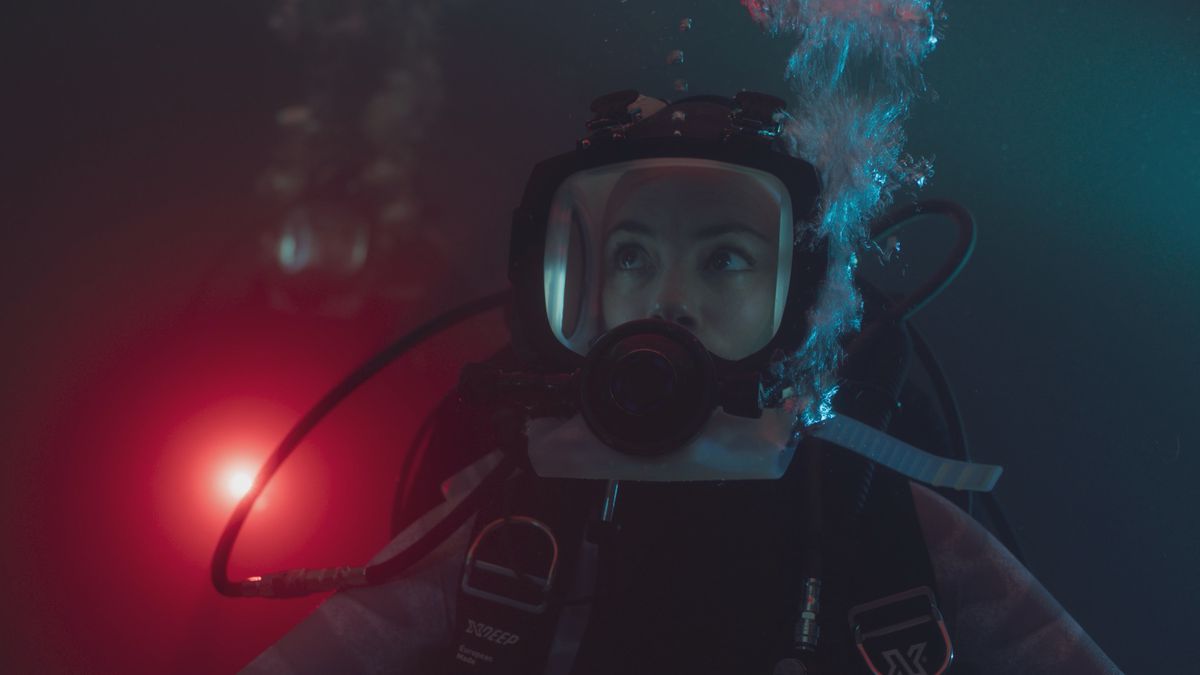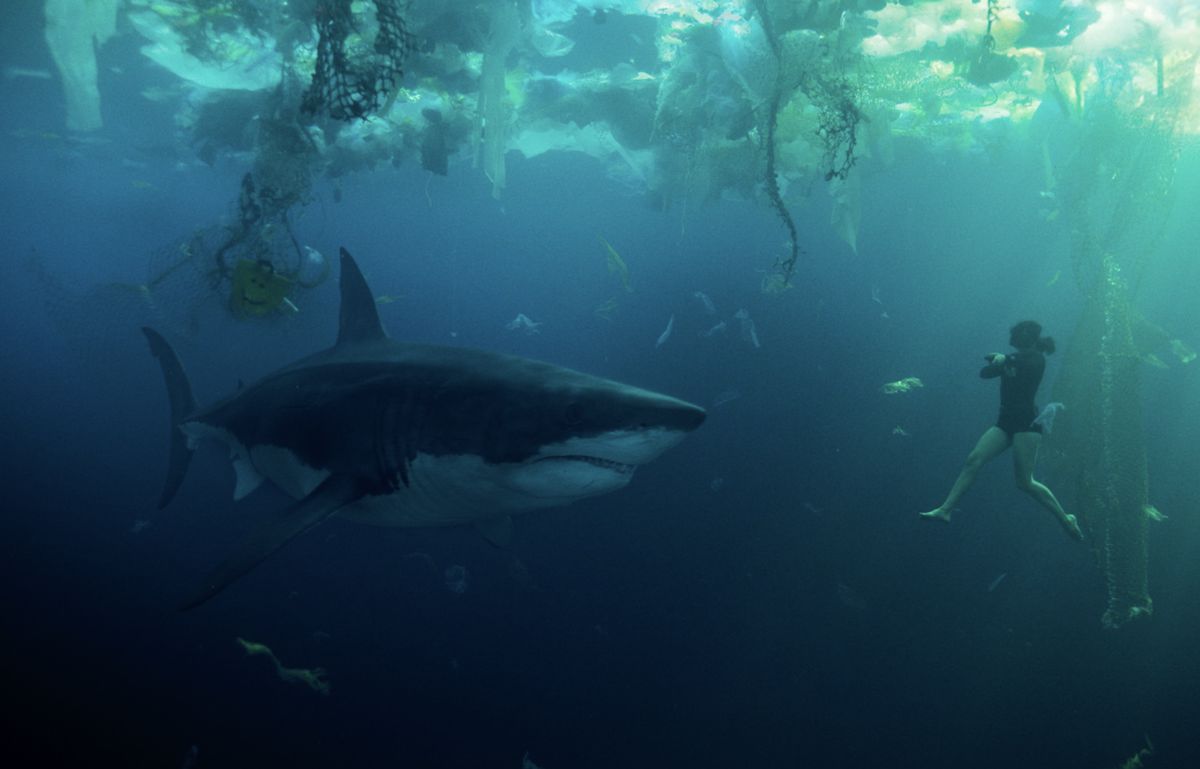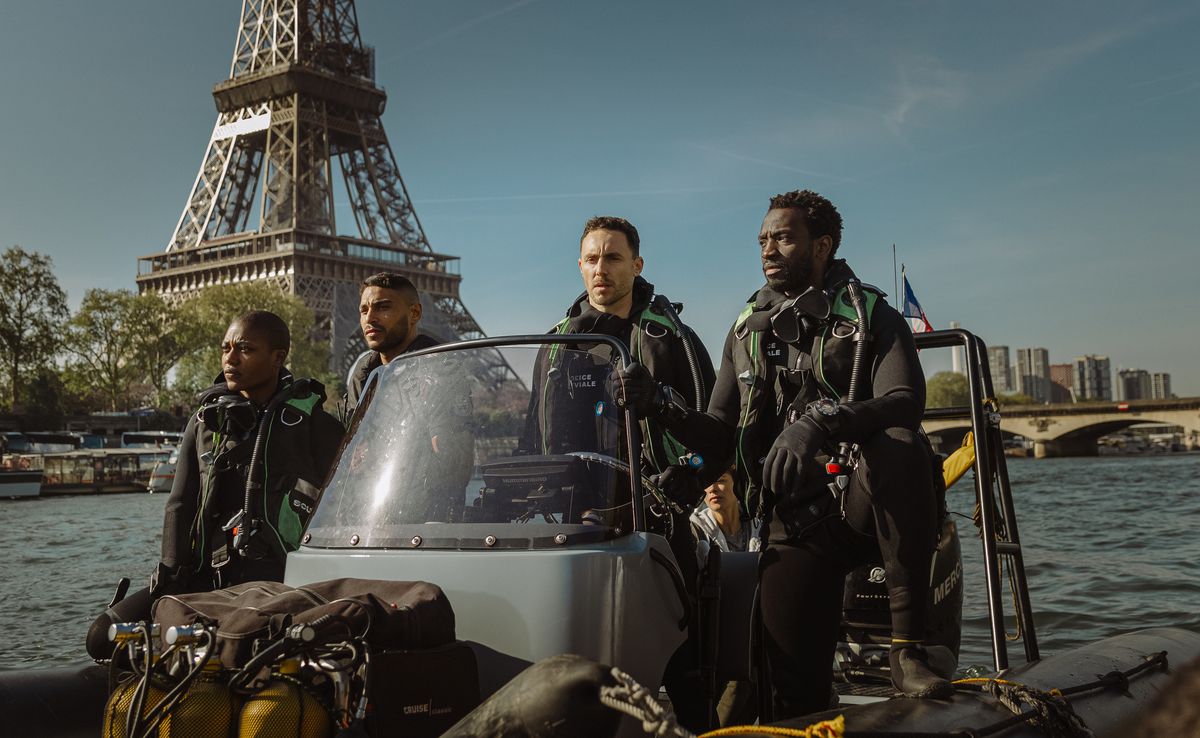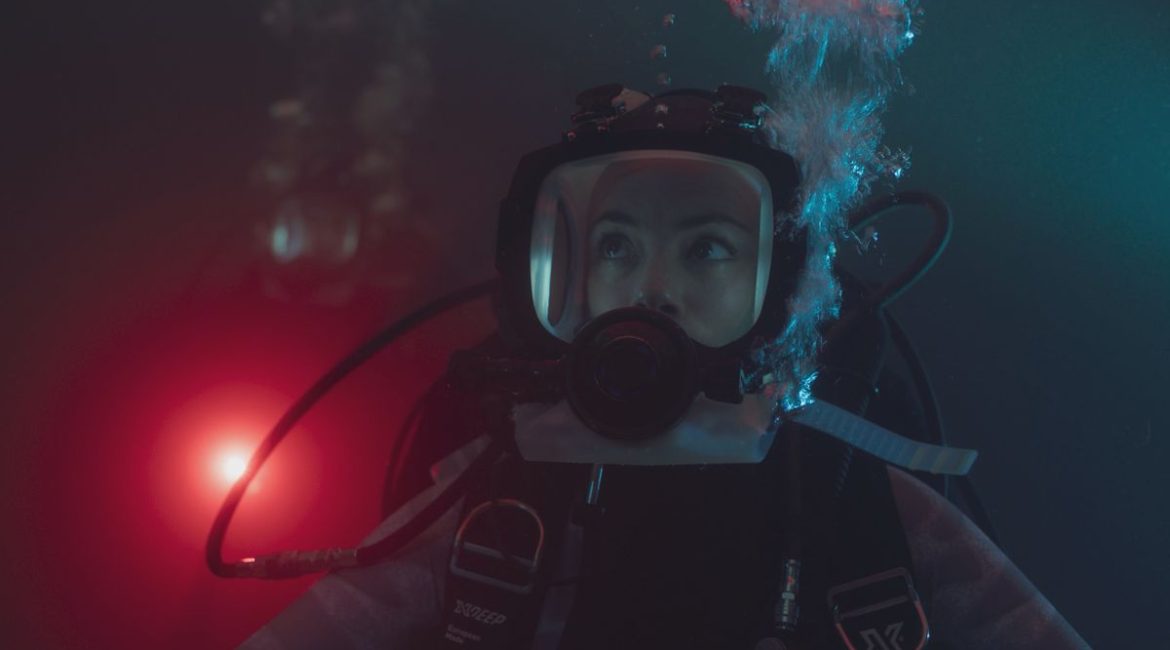Conventional wisdom says there are two ways to make a shark attack movie. You can set it at sea, where most sharks live, and try to use character, plot, compelling action, and maybe over-the-top devourings to make your story feel unique. Or you can lure in viewers by putting sharks somewhere no one expects sharks — flying through the air and landing all over Los Angeles! Roaming the streets of downtown New Orleans! Swimming through the snow at a ski resort! Bursting out of the ground in the jungle! Most filmmakers who choose the latter path have to abandon any sense of reality and embrace absurdism. Netflix’s French thriller Under Paris, from Hitman director Xavier Gens, is a bold attempt to have it all.
Gens and co-writers Maud Heywang and Yannick Dahan seem to want their thriller to be both a serious, thoughtful, character-driven movie and a pulpy, gory thriller where a CG shark converts people into chum in the City of Light. That plot stretches believability at every point, but Gens refuses to cede any of the ground around tone or realism that’s expected from a “shark in an impossible place” movie. Instead, he slaps the most serious face on it that he can.
Even so, it’s an extremely silly and not particularly scary movie.

Best Actress Oscar nominee Bérénice Bejo (The Artist) stars as Sophia, a marine researcher whose shark-tagging project went terribly wrong when a mako designated as “Lilith” attacked her dive crew years ago. Traumatized to the point where she spends most of the movie wearing an unchanging half-determined/half-lost expression, Sophia winds up in Paris, giving desultory aquarium lectures to bratty school groups.
Her past resurfaces (along with a familiar fin) when fervent young activist Mika (Léa Léviant) contacts her on behalf of a resistance group called SOS, or Save Our Seas. Mika’s team hacks into wildlife tagging systems to deactivate the tags so fishing boats can’t use them to hone in on animals’ locations. SOS is tracking Lilith’s tag, and they’ve traced her to the Seine. Mika, her hacktivist friend Ben (Nagisa Morimoto), and their group want to save the shark by luring it back out to the ocean. Sophia just wants to keep Parisians from getting eaten by a deep-sea shark they don’t expect to encounter in a relatively shallow freshwater river.
As much as this premise feels like cult-movie goofiness aimed at fans of trashy creature features, there is at least a little science behind it. Sharks have been found in England’s Thames river, some shark species can navigate freshwater or transition from rivers to oceans and back, and dwindling habitats and rising global temperatures have pushed many animal species to behave in odd ways or evolve rapidly to fit into new ecosystems. (The film is also drawing heavily on recent real-world attempts to detoxify the Seine so it can be used for 2024’s Olympic Games.)

All of which makes Under Paris one of the most substantive of the many aquatic-attack horror movies that have tried to coast along in the wake of Steven Spielberg’s Jaws, at least for most of its run time. The leads are established actors with well-earned reputations, projecting grim, soulful determination. The cinematography is razor-sharp and superbly lit, a standout in an era of murky filmmaking. The themes, about climate change and generational discord, have some resonance. At nearly every moment, this movie asks viewers to take it all at face value.
Gens and his co-writers don’t want to get too egg-headed about any of the movie’s details. Whenever a character brings up the implausibility of an immense mako picking off Parisians, Sophia changes the subject as rapidly as possible, with a crisp “You didn’t question it when it was a beluga whale!” or a tossed-off comment about climate change and evolution.
Overstuffing the script with characters and plot threads feels like a similar diversion, designed to keep people from thinking too much about what they’re watching. That might be the best explanation for most of the scenes involving Nassim Lyes, the lead of Gens’ hard-hitting recent action movie Mayhem!, as Sgt. Adil, the leader of an eerily militarized River Brigade police force that monitors the Seine, taking down unauthorized divers and kayakers. His group, naturally, first refuses to believe there is a shark, then refuses to entertain the idea of rescuing it instead of killing it.

A surprising percentage of Under Paris’ 101-minute run time goes toward Adil and others arguing about and trying to prove or disprove the shark’s existence. At times, that’s a tedious process, since the audience already knows the answer. But at least it’s a way to solve one of the biggest problems most ocean-going shark attack movies face: how to keep getting people back into the water, where they can get dramatically eaten. Eventually, though, the action ramps up — and at that point, Gens veers sharply, abandoning seriousness and turning the movie into the pulpy, over-the-top, eye-rolling shlock feature he’d worked so hard to avoid.
If you want to define the “two ways to make a shark movie” split along an even simpler axis, you could also say that the basic paths are “Copycat Jaws for all you’re worth” and “Do literally anything else.” Again, Under Paris has it both ways. At first, Gens and company build unique characters and chart their own path. Then they introduce the Big Important International Swim Event that’s about to take place in the Seine, and the mercenary, won’t-hear-reason mayor who refuses to cancel it just because people keep getting killed. Suddenly, the movie feels like a pale echo of Spielberg’s masterpiece, following its playbook line by line, right down to the obligatory scene where Sophia makes a dramatic discovery during a shark autopsy.
But when the inevitable bloodbath starts, Under Paris seems to be cribbing from much messier shark attack movies instead: an unlikely bisection of a diver straight out of Deep Blue Sea, mixed in with Piranha 3D’s barrage of over-the-top CG water action. All of which leaves Under Paris feeling like a slapdash attempt to grab every possible audience at once, in a way that doesn’t fully serve any of them.

None of this odd tone-shifting, copycatting, or narrative overcrowding would matter if Under Paris was tense, frightening, and engaging. Scientists and researchers complain that the endless stream of killer-shark movies has driven irrational fear of animals that generally just aren’t that dangerous, but it seems natural enough for viewers to maintain a fascination and dread around primordial killers that most victims will never see coming. Killer-shark movies — of both the winkingly ridiculous “land sharks gone wild” variety and the at least slightly plausible ones — will keep getting made as long as people remember their first experience watching Jaws and hope to recreate that thrilling tension.
But regardless of what mode filmmakers lean into for a shark movie, they need to bring something worthwhile to that mode. Under Paris gets about halfway there on every front — drama, thrills, terror, character conflict, humanity-versus-nature messaging — and not much further than that. It’s a film destined to be outpaced within a year by its own “every shark attack in Under Paris” YouTube supercut, when someone realizes how easy it would be to whittle this distracted, everything-and-the-kitchen-sink movie down to a much simpler experience aimed at a much simpler audience.
Under Paris is streaming on Netflix now.
